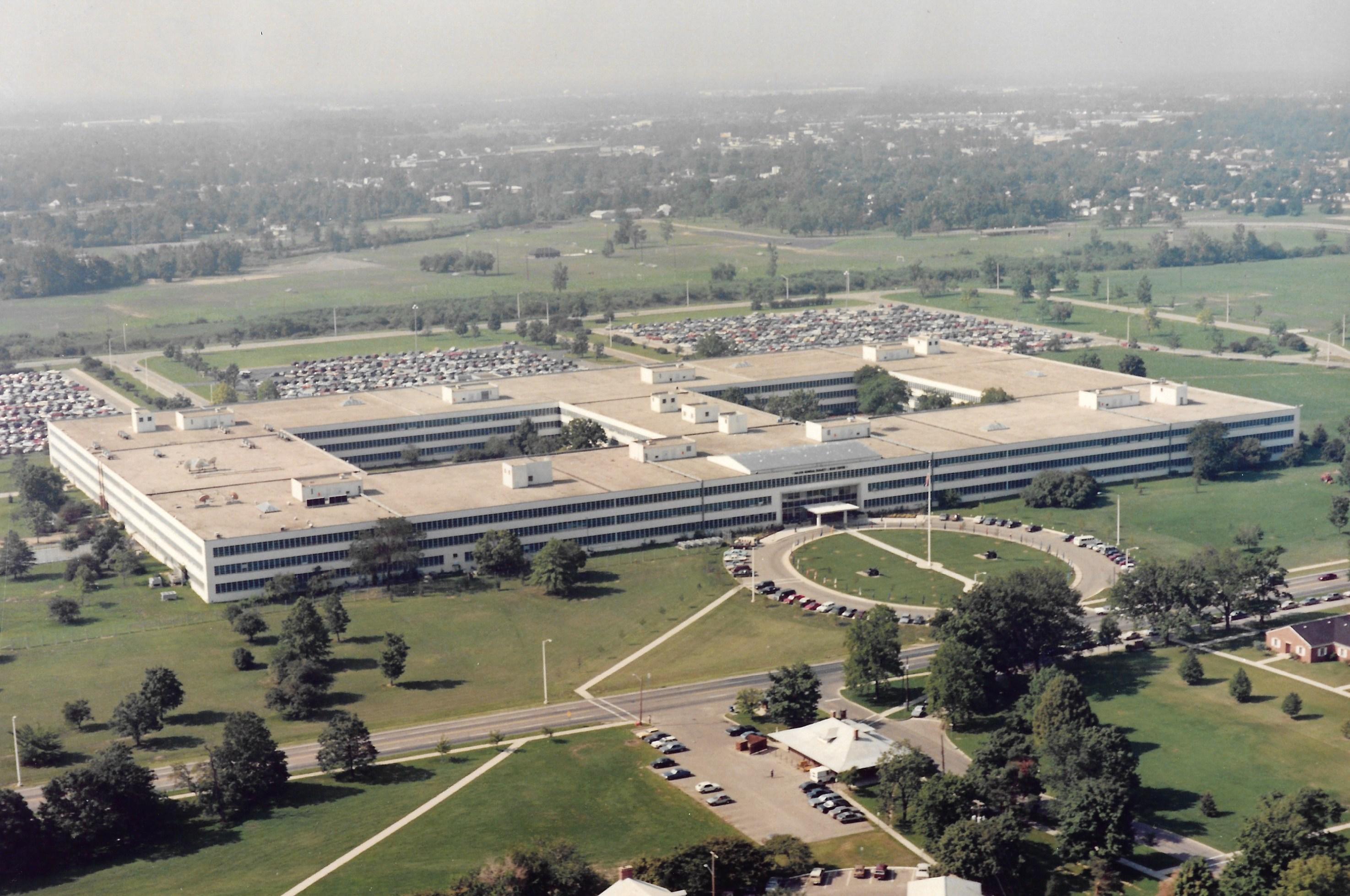The principal organization housed in this building has been known by numerous names: Finance Center, U.S. Army (1953-1972); U.S. Army Finance Support Agency (1972-1974); U.S. Army Finance & Accounting Center (1975-1991); and Defense Finance Accounting Service—Indianapolis Center (1991-), M. B. Emmett J. Bean Finance Center (1987-).

The original Finance Center for the U.S. Army was located in a converted ammunition plant in St. Louis. The operational demands of the Financial Center outgrew the St. Louis location and the building was reverted back to ammunition manufacturing during the Korean War. A nationwide search for a new home ended in the selection of Schoen Field, a flying field at .
Ground for a new building was broken on August 10, 1951. Eighty-three thousand cubic yards of concrete and 1.3 million pounds of steel were used in construction, producing a building 966 feet long and 612 feet wide with 1.5 million square feet of office space that cost $19 million. Despite its size, as well as a tornado and a trucking strike during its construction, the Finance Center was dedicated on October 9, 1953, ahead of schedule and under cost.
The Finance Center’s impact on the Indianapolis economy was immediate and has remained significant. In the 1950s, it was the third-largest employer in the area, with 6,000 to 8,000 workers, 4,000 of whom were hired in Indianapolis.
Throughout its history, the Finance Center has been the working hub of Army financial operations. It pays active Army and Reserve Component soldiers and families; retired soldiers, families, and annuitants; and eligible former soldiers and spouses. The Finance Center also pays transportation bills for the Army, Air Force, Secretary of Defense, Defense Logistics Agency, Job Corps, and some Department of Defense (DoD) agencies. Finally, the Finance Center ensures accurate monetary payments of many kinds and gathers financial data on many Army programs. This accurate data reflects the increasing role financial management plays in the military.
On May 7, 1987, the Finance Center was renamed the Major General Emmett J. Bean Center in honor of its first commander. General (Ret.) was present for the dedication ceremony, the first time a major U.S. Army building had ever been named for a living soldier.
On January 20, 1991, the Finance Center was transferred from the Army to the DoD in an effort to standardize and consolidate financial and accounting policies as a part of the Base and Realignment and Closure Act of 1991. Reduction in the size of the U.S. military during the early 1990s and the planned closure of Fort Harrison led to proposals that the Finance Center’s responsibilities be divided and relocated.
Civic leaders in Indianapolis and the city of (in which the center is located) lobbied strenuously to retain the facility. In spring 1994, the DoD announced plans to maintain some of the Finance Center’s operations in Indianapolis. As a result, the DoD created a new agency known as the Defense Finance and Accounting Service (DFAS) to help standardize and consolidate financial services for the DoD.
The Indianapolis Branch, in the DFAS-Indianapolis Center, provides a range of financial and accounting services to the U.S. Army, Air Force, and 26 American defense agencies worldwide. Another round of defense budget cuts in 2005 closed 20 DFAS sites and relocated the headquarters from Arlington, Virginia, to Indianapolis.
In 2021 an estimated 5,000 employees work in various agencies within the building.

Help improve this entry
Contribute information, offer corrections, suggest images.
You can also recommend new entries related to this topic.


